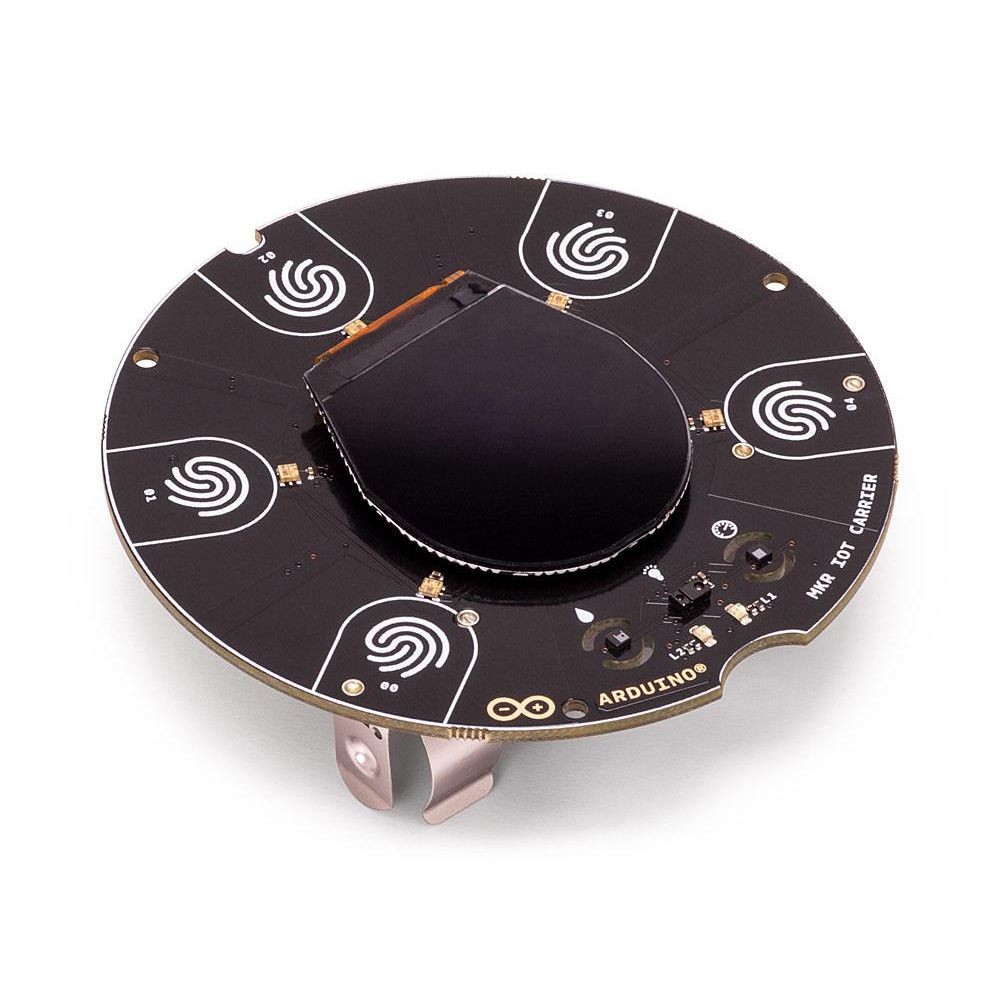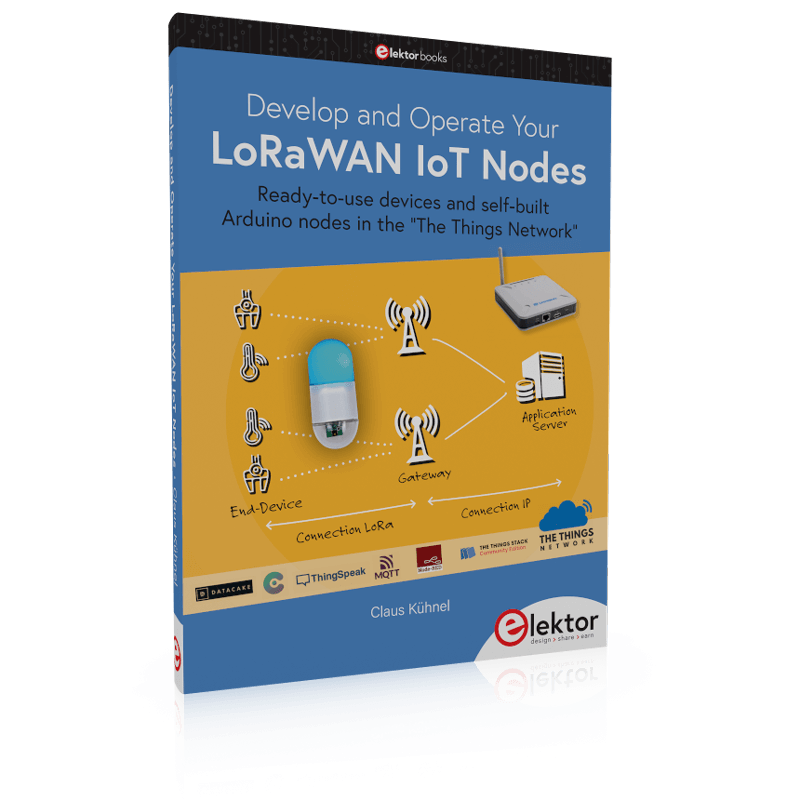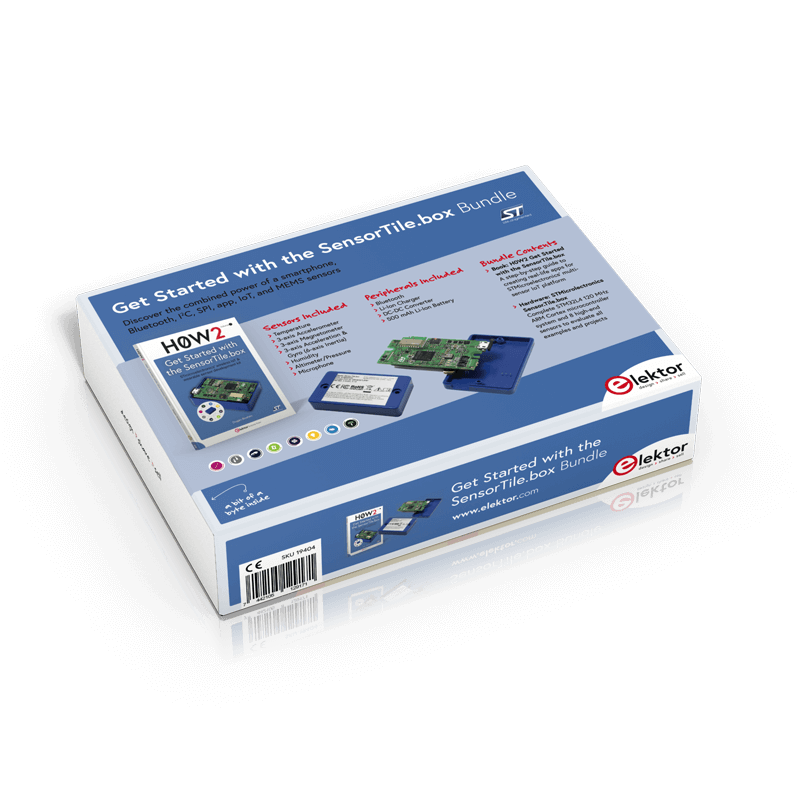IoT & Sensors
IoT Applications
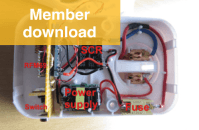
IoT Gateway and Wireless Nodes
At times, you might find yourself needing functionalities in a home automation system that aren't readily offered by commercial products. The system presented in this article features wireless communication between different nodes and a central gateway. The latter employs MQTT to transmit measurement data to an OpenHAB server for processing and visualization. The gateway consists of an Arduino, an RFM69 module, and an W5100 Ethernet module.Download article

Extendable Environmental Monitoring System: Publish Data on IoT Platforms
Once you know how Geiger-Müller (G-M) tubes work, you can design a circuit for using them. As noted in this article, all you need is a high-voltage (HV) supply to bias the G-M tube and an amplifier to make the output pulses audible and visible. The basic circuit is formed by the HV supply, the G-M tube, a pulse detector and stretcher, and a buzzer and a LED. A microcontroller was added to further process data, and the MCU displays measured values on an LCD, and it transmits them over a wireless connection to the Internet.Download article

Your First Steps with an ESP32-C3 and the IoT: A Wi-Fi Button and Relay
With the ESP32-C3 and newbie-friendly development environments like the Arduino IDE, developing small IoT projects doesn't have to be difficult. This article presents a simple project: you can create a link between a Wi-Fi-enabled push button and a Wi-Fi-enabled relay. The relay can be activated remotely by the button and reports its status back to the push button. In addition to the ESP-C3-12F kits, a sensor and an actuator are required. The MQTT protocol exchanges messages using a broker (server) without specifying what the messages look like. You can compare this to sending a letter.Download free article

A Controller for Spotify
Do you enjoy Spotify? If so, follow along to learn how build a wireless Spotify controller using an Arduino Oplà IoT kit, which includes a Maker Board and a carrier board. Spotify comes with an easy-to-use programming interface to control the Spotify player via the network. The device described in this article displays the Spotify logo as well as the button functions on an OLED display. When you touch a button, the corresponding API function is called.Read article online
Home Control and Automation

Connect Your Thermostat with ESPHome
Want to have a go at home automation? A good place to begin is with your home thermostat. Before you start, check out this informative article. As you'll see, you can replace an existing “dumb” thermostat with a homemade smart and connected solution that's suitable for home automation. ESPHome features a "climate" component to control heating and cooling devices. A thermostat therefore is a climate component. The advantage of using a built-in component is that it saves you work. It will also ensure you get a nice graphical control widget in the Home Assistant user interface.Download free article

Home Automation Made Easy: With ESPHome, Home Assistant & MySensors
Would you like to equip your home with remote-controlled lights or curtains that open and close automatically? Check out this handy introduction to home automation written by Elektor engineer Clemens Valens. He covers a range of key topics, including: Espurna and ESPHome; Home Assistant; low-power IoT devices; MySensors integration; enabling multicast DNS (mDNS) on Windows; editing a YAML file; building a MySensors Wi-Fi gateway; and more.Download article

Is Matter the Thread to Save the Smart Home?: New Standards to Simplify the Smart Home
Ah, the dream of the Smart Home. And, for many, it remains a dream. While there are plenty of wireless and wired protocols, each has its own domain, apps, and features. The key seems to be Thread, which resolves the long-standing issue with Zigbee, Z-Wave, and Bluetooth Mesh, namely that they require a gateway that translates from IP to the protocol that these wireless networks use. Matter provides the grease that makes Thread make sense, ensuring that users, rather than the consumer electronics giants, can decide which apps and voice assistants they’ll use to control their devices.Download article

ESP32 Doorbell via Telegram
When your doorbell rings, this circuit transmits a message to a to the phone or computer on which you're running the Telegram app. Provided your Telegram app is active and connected to the Telegram server (by Wi-Fi or mobile network), it will alert you to the presence of the visitor at your doorstep no matter where you are. If you trust the visitor, you can even return a message that operates an electric door opener. You can develop this project with any ESP32 or ESP8266 module.Download free article
IoT Protocols
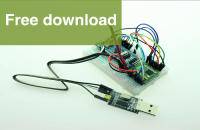
My First LoRaWAN: With Blue Pill, LoRa Breakout Board and The Things Network
Want to experiment with LoRaWAN? LoRa radio technology enables data transmission with a unique combination of long-range capability and low energy consumption. This feature makes LoRa especially well-suited for networked sensors that need to conserve their energy resources. The Things Network, a widely used and open network, facilitates the reception of sensor data. For initial experiments, only a few inexpensive small boards are needed.Download free article
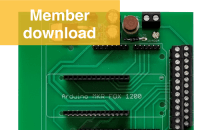
Sigfox CO2 Traffic Light
The CO2 traffic light system described in this article connects to the Internet using the Sigfox radio network rather than Wi-Fi. Sigfox is particularly well suited to this application because we only need to send small amounts of data, and the excellent radio coverage achieved by Sigfox gives us maximum flexibility. The design is connected to the Internet of Things (IoT) using an Arduino MKR FOX1200 microcontroller board, which talks to the Sigfox network.Download article

A Matter of Collaboration: Developing with the Thing Plus Matter Board and Simplicity Studio
The IoT is scattered, with multiple communication protocols. As a result, both developers and consumers must decide how they want their devices to communicate. Once a decision is made, you tend to be locked into an environment. Fortunately, Matter is a unified, open-source application-layer connectivity that is changing the game. This article presents a Matter-compatible demo application with the SparkFun Thing Plus Matter Development Board and the Simplicity Studio IDE.Download free article
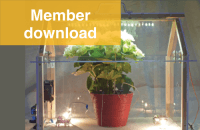
The Connected Greenhouse: IoT Demonstration Project Using MQTT and Node-RED
Want to build a complex IoT project, such as a system for monitoring and controlling the greenhouses in a nursery? You can with MQTT, Node-RED, and a little know-how. This project entails tasks like maintaining interior temperature and lighting levels at predetermined targets, while also monitoring the humidity and the soil's moisture content. Should these metrics deviate beyond designated thresholds, an alert must promptly notify the nursery manager — perhaps through an email.Download article
Environmental Sensors
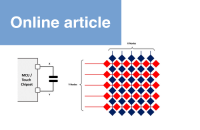
How Do Capacitive Touch Sensors Work?
Capacitive sensors have changed the way we interact with countless products. Evaluated many times per second, any change in their capacitance indicates the presence of a finger to signal a press or a rotation. Are you curious about how capacitive touch sensors work? Elektor has you covered. This interesting article investigates the impact of capacitance on circuits, and it covers various typics of capacitive sensors. After learning about the basics, you can start thinking about adding capacitive touch to Raspberry Pi- and Arduino-related applications.Read article online

Moisture Sensors for Watering Systems: Automatic Watering
Before delving into the realm of moisture sensors, it's advisable to ponder over the following tips regarding sensor selection and integration. Once you've grasped the basics, you can seamlessly initiate the process of integrating the sensors using the Arduino IDE, suitable for boards like Arduino and ESP. The watering system described here is based on an ESP32 and is fully integrated into a home automation system. A user can manually switch on the system, view watering times, set the times, and much more.Download article

Six-Channel Temperature Monitor & Logger: Measures from −240 °C to +850 °C
Temperature monitoring and logging is an essential aspect of countless industrial processes and consumer applications. This article details a six-channel temperature monitor and logger. Although the project uses mostly SMT parts, assembling the PCB isn't too difficult. Start by mounting two-terminal parts like resistors and ceramic capacitors and then continue with the taller parts. Respect and verify the polarity of polarized parts like diodes and electrolytic capacitors. As soon as the board is powered, it will start sending comma-separated values (CSV) in human-readable ASCII format.Download article

Ultrasonic Reverse Parking Aid with Arduino Uno
Many new cars today come equipped with a rear cameras and parking aids as "standard" safety features. But it wasn't always this way. Just a few years ago, you had to either upgrade to such solutions or install them yourself. In this article, long-time Elektor author Dogan Ibrahim describes a DIY ultrasonic sensor-based parking aid solution built around an Arduino Uno. The distance to the object in front of the ultrasonic sensor is calculated in centimeters and is stored in a variable called "distance."Download free article

Weather Station Sensors: Which One Should You Choose?
When building a weather station, you have so many options of sensors to choose from. It should be accurate, reliable and not to costly, and also easy to control by the microcontroller of your choice. In this article, we will provide an in-depth comparison of some environmental sensors.Download free article
OBD2 Meets LoRaWAN: Real-World IoT for Vehicles and Sensors
OBD2 Meets LoRaWAN! Elektor Senior Engineer Saad Imtiaz and Editor Brian Tristam Williams explore how OBD2 vehicle data and LoRaWAN sensor networks can work together in real-world IoT systems. In the hands-on session, they walk through how Saad built a fully functional ESP32-S3-powered OBD2 dashboard that taps into live vehicle metrics like fuel economy, coolant temperature, and battery voltage. You’ll also learn about low-power LoRaWAN nodes used for smart environmental sensing.
Key Topics:
✓ Reading ECU data over CAN and UART using ESP32
✓ Visualizing sensor metrics on touch displays
✓ LoRaWAN communication strategies for ultra-low power
✓ Combining vehicle diagnostics with scalable IoT
✓ Real-world prototyping challenges and solutions
✓ Audience Q&A
Watch now!
Key Topics:
✓ Reading ECU data over CAN and UART using ESP32
✓ Visualizing sensor metrics on touch displays
✓ LoRaWAN communication strategies for ultra-low power
✓ Combining vehicle diagnostics with scalable IoT
✓ Real-world prototyping challenges and solutions
✓ Audience Q&A
Watch now!











